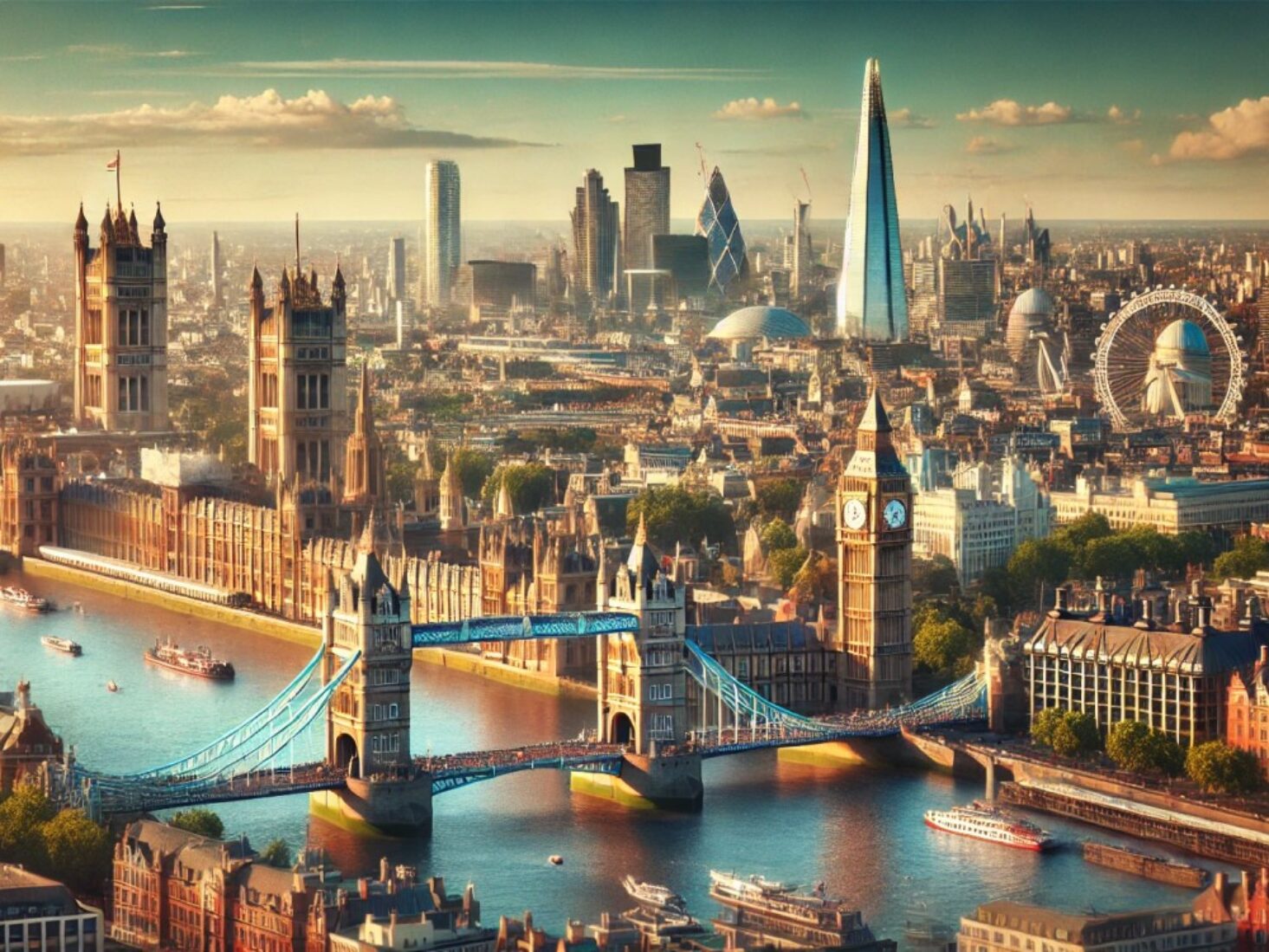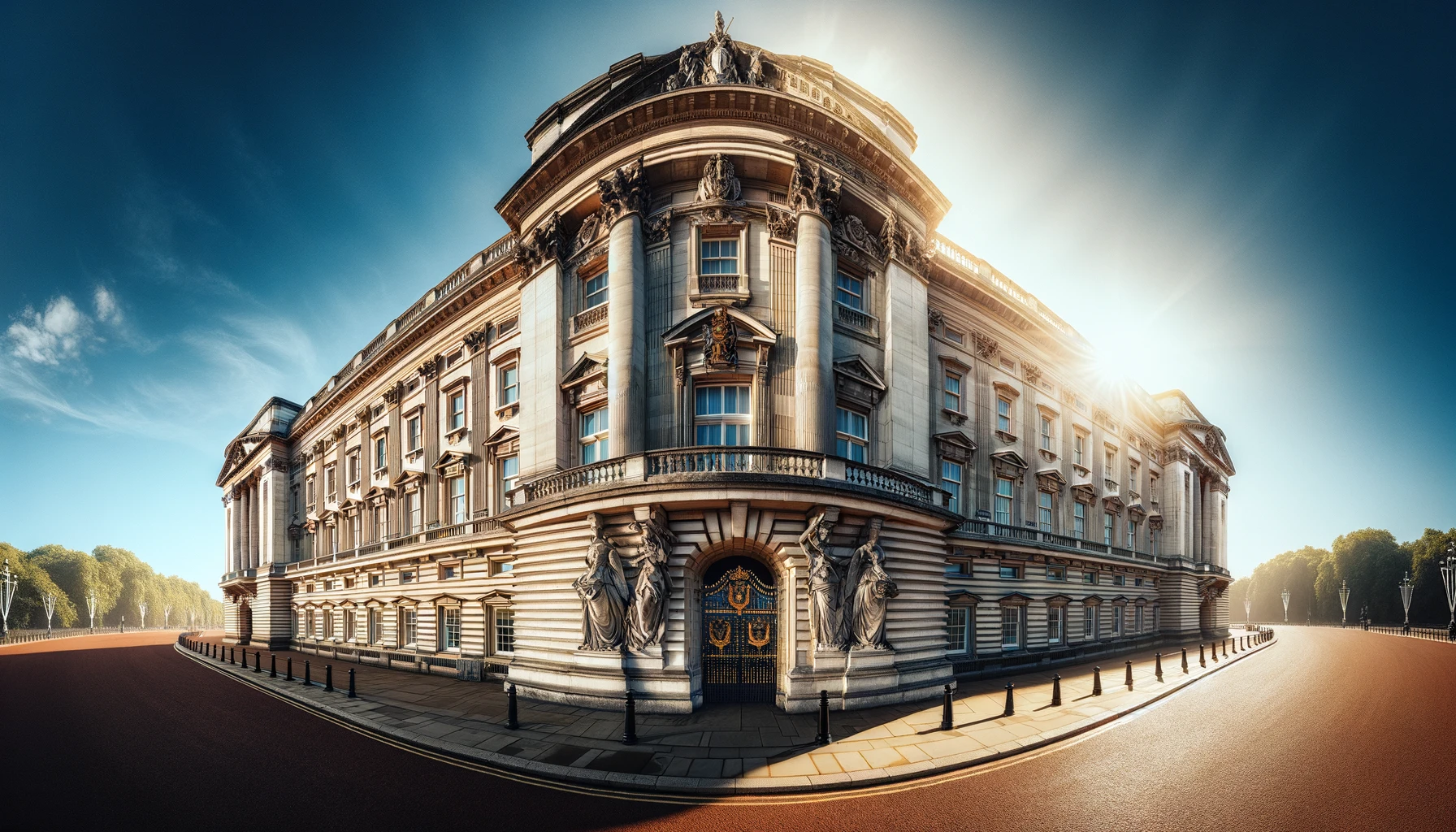
The Best London Attractions for Architecture Lovers
London, a city steeped in history and brimming with modern innovation, is a paradise for architecture lovers. From its historic landmarks to contemporary marvels, London offers a diverse array of architectural styles that reflect its rich cultural heritage and dynamic present. The city’s skyline is a testament to centuries of architectural evolution, making it an ideal destination for those who appreciate the art and science of building design.
Exploring the historic sites in London provides a fascinating glimpse into the past. The city is home to iconic structures that have stood the test of time, each telling a story of bygone eras. From the medieval grandeur of the Tower of London to the classical elegance of St. Paul’s Cathedral, these historic landmarks offer a captivating journey through centuries of architectural excellence.
London’s thriving arts scene is another treasure trove for architecture enthusiasts. The integration of art and architecture can be seen throughout the city, enhancing the visual and cultural landscape. The London arts scene is vibrant and diverse, featuring everything from traditional galleries to cutting-edge installations. This fusion of art and architecture not only beautifies the city but also enriches the experience of those who explore its streets and buildings.
For those with a keen interest in artistic architecture, London offers numerous attractions that highlight the intersection of these two fields. Visiting London attractions for art lovers reveals the city’s dedication to preserving and showcasing artistic heritage within architectural frameworks. These attractions serve as cultural landmarks where architecture and art converge, providing a feast for the eyes and the soul.
The modern architectural landscape of London is equally impressive, with districts like Shoreditch leading the way in contemporary design. Known for its creative energy and innovation, Shoreditch’s Tech City exemplifies the cutting-edge architecture that defines modern London. This area is a hub of technological advancements and stylish buildings, offering a glimpse into the future of urban design.
Bermondsey, another vibrant area of London, showcases a blend of historical and modern architecture. The journey through Bermondsey unveiled uncovers hidden gems and architectural wonders that reflect the area’s industrial past and its contemporary transformation. This blend of old and new creates a unique architectural narrative that is both intriguing and inspiring.
Museums in London are not only repositories of art and history but also architectural masterpieces in their own right. Visiting the museums in London offers a dual experience of exploring world-class exhibits within stunning architectural settings. From the grand British Museum to the modern Tate Modern, these institutions highlight the importance of architecture in enhancing the cultural experience.
London’s parks and open spaces also contribute to the city’s architectural charm. The design and layout of these green spaces reflect the city’s commitment to integrating nature with urban life. Exploring the parks in London reveals thoughtfully designed landscapes that offer both beauty and functionality. These parks provide a serene escape from the bustling city while showcasing landscape architecture at its finest.
Finally, the various attractions in London offer a comprehensive look at the city’s architectural diversity. From historic buildings to modern skyscrapers, the attractions in London capture the essence of a city that embraces both tradition and innovation. Each attraction adds to the architectural mosaic of London, making it a must-visit destination for architecture lovers.
London’s architectural landscape is a rich tapestry of historical grandeur and modern innovation. Whether you are drawn to the timeless beauty of historic sites, the artistic flair of cultural landmarks, or the sleek designs of contemporary buildings, London has something to offer every architecture enthusiast. Exploring the city’s architectural treasures provides a deeper understanding of its cultural heritage and its continuous evolution, making London a truly captivating destination for those who appreciate the art of architecture.
The Tower of London
The Tower of London, a historic castle located on the north bank of the River Thames, is one of London’s most iconic landmarks. Founded by William the Conqueror in 1066, the Tower has served variously as a royal palace, prison, treasury, and fortress.
The Tower of London’s architecture is a fascinating mix of Norman, medieval, and Renaissance styles. The White Tower, the oldest part of the complex, is a stunning example of Norman military architecture with its thick walls, small windows, and imposing presence. The Beauchamp Tower, with its intricate carvings and graffiti left by prisoners, adds a human touch to the fortress’s storied past. The Tudor-era additions, such as the Queen’s House and the ornate Chapel of St. Peter ad Vincula, showcase the evolution of architectural styles over centuries.
A visit to the Tower of London offers a journey through England’s tumultuous history. Highlights include the Crown Jewels, the medieval palace, and the Yeoman Warder (Beefeater) tours, which provide fascinating insights into the Tower’s history and architecture. The Tower of London’s imposing walls and towers, along with its location along the Thames, make it a must-visit for architecture enthusiasts.
Westminster Abbey
Westminster Abbey, a UNESCO World Heritage Site, is a masterpiece of Gothic architecture and a symbol of British heritage. Founded in the 10th century and rebuilt in the Gothic style by Henry III in the 13th century, the Abbey has been the site of numerous royal coronations, weddings, and burials.
Architectural Highlights: Westminster Abbey is renowned for its stunning Gothic architecture, characterized by its soaring spires, pointed arches, and intricate stone carvings. The Abbey’s facade features a magnificent rose window and elaborately decorated portals. Inside, the nave’s high vaulted ceilings and the intricate fan vaulting of the Henry VII Chapel are awe-inspiring. The Abbey’s many chapels, tombs, and memorials, including the Poet’s Corner and the tombs of monarchs, offer a rich tapestry of architectural and artistic splendor.
Visitor Experience: A visit to Westminster Abbey provides an opportunity to explore one of the finest examples of Gothic architecture in the world. Guided tours offer detailed insights into the Abbey’s history, architecture, and the notable figures buried within its walls. The serene Cloisters and the Abbey Gardens provide a tranquil retreat in the heart of London.
St. Paul’s Cathedral
St. Paul’s Cathedral, with its iconic dome, is one of London’s most recognizable landmarks. Designed by Sir Christopher Wren and completed in 1710, the Cathedral is a masterpiece of English Baroque architecture.
Architectural Highlights: St. Paul’s Cathedral is renowned for its majestic dome, which was the world’s largest when completed and remains one of the tallest domes in the world. The dome’s interior features stunning mosaics and a whispering gallery, where whispers can be heard clearly across the dome. The Cathedral’s facade is adorned with classical columns, intricate carvings, and two imposing towers. Inside, the nave’s grand scale, the beautifully decorated quire, and the elaborate marble tombs of notable figures such as Admiral Nelson and the Duke of Wellington showcase Wren’s architectural genius.
Visitor Experience: Visitors to St. Paul’s Cathedral can explore its magnificent interior, climb to the top of the dome for panoramic views of London, and visit the crypt, where many famous Britons are buried. Guided tours and multimedia guides provide in-depth information about the Cathedral’s history, architecture, and the significant events that have taken place within its walls.
The Houses of Parliament and Big Ben
The Houses of Parliament, also known as the Palace of Westminster, is a stunning example of Gothic Revival architecture. Designed by Sir Charles Barry and Augustus Pugin and completed in the mid-19th century, the Palace is home to the UK Parliament.
Architectural Highlights: The Houses of Parliament is characterized by its elaborate Gothic Revival style, with pointed arches, intricate stonework, and an abundance of decorative details. The iconic Elizabeth Tower, commonly known as Big Ben, is one of the most recognizable structures in London, with its clock faces and ornate spire. The interior of the Palace is equally impressive, with the grand Westminster Hall, the opulent Central Lobby, and the richly decorated chambers of the House of Commons and the House of Lords.
Visitor Experience: Visitors can take guided tours of the Houses of Parliament, which provide a fascinating insight into the building’s history, architecture, and the workings of the UK Parliament. The tours include visits to key areas such as Westminster Hall, the Commons Chamber, and the Lords Chamber. The stunning architecture and historical significance of the Palace of Westminster make it a must-visit for architecture enthusiasts.
The Shard
The Shard, designed by renowned architect Renzo Piano and completed in 2012, is a modern architectural marvel and the tallest building in the UK. Standing at 310 meters, The Shard’s distinctive glass facade and sharp, tapering shape have become an iconic part of the London skyline.
Architectural Highlights: The Shard’s design is inspired by the concept of a spire, with its glass facade reflecting the sky and the city below. The building’s structure is composed of eight sloping glass walls, creating a multi-faceted appearance that changes with the weather and the time of day. The Shard houses offices, residences, a hotel, restaurants, and observation decks, all offering spectacular views of London.
Visitor Experience: The Shard’s observation decks, known as The View from The Shard, provide unparalleled panoramic views of London. Visitors can ascend to the 72nd floor and enjoy breathtaking vistas that stretch for miles in every direction. The combination of modern design and stunning views makes The Shard a must-visit for architecture lovers.
The Gherkin
The Gherkin, officially known as 30 St Mary Axe, is a striking example of contemporary architecture in the heart of London’s financial district. Designed by Norman Foster and completed in 2004, the Gherkin’s unique shape and innovative design have made it an architectural icon.
Architectural Highlights: The Gherkin’s distinctive design is characterized by its cylindrical shape and spiraling pattern of triangular glass panels. The building’s aerodynamic form reduces wind turbulence and provides natural ventilation, making it an environmentally sustainable design. The Gherkin’s interior features an open-plan layout with atrium spaces that allow natural light to penetrate deep into the building.
Visitor Experience: While the Gherkin is primarily an office building and not open to the public, its striking exterior can be admired from various vantage points around the City of London. The building’s design and impact on the London skyline make it a significant architectural landmark.
The British Museum
The British Museum, founded in 1753, is not only a world-renowned cultural institution but also an architectural masterpiece. The museum’s neoclassical facade and the modern Great Court are highlights for architecture enthusiasts.
Architectural Highlights: The British Museum’s original neoclassical building, designed by Sir Robert Smirke, features a grand facade with a portico of 44 Ionic columns and a pediment decorated with sculptures. The Great Court, designed by Norman Foster and opened in 2000, is a stunning modern addition. The glass and steel roof of the Great Court covers the museum’s central courtyard, creating a light-filled atrium that surrounds the historic Reading Room.
Visitor Experience: The British Museum’s extensive collections span thousands of years and cultures, offering visitors a chance to explore the world’s history and heritage. The architecture of the museum itself is a significant attraction, with guided tours and multimedia guides providing insights into its design and construction.
Tate Modern
Tate Modern, housed in the former Bankside Power Station, is a premier modern art gallery and a striking example of adaptive reuse in architecture. The transformation of the power station into a contemporary art museum was led by the Swiss architects Herzog & de Meuron and completed in 2000.
Architectural Highlights: The Tate Modern’s design retains the industrial character of the original power station, with its imposing brick facade and towering chimney. The interior features vast open spaces, including the iconic Turbine Hall, which hosts large-scale art installations. The Switch House extension, also designed by Herzog & de Meuron and completed in 2016, adds a dynamic new dimension to the building with its twisting brick form and panoramic viewing terrace.
Visitor Experience: Visitors to Tate Modern can explore its extensive collection of modern and contemporary art, housed in a unique architectural setting. The viewing terrace offers stunning views of the River Thames and the London skyline. The blend of industrial heritage and contemporary design makes Tate Modern a must-visit for architecture lovers.
The Natural History Museum
The Natural History Museum, located in South Kensington, is a stunning example of Victorian Romanesque architecture. Designed by Alfred Waterhouse and opened in 1881, the museum is renowned for its elaborate facade and ornate interiors.
Architectural Highlights: The Natural History Museum’s design is characterized by its grand facade, featuring terracotta tiles decorated with sculptures of animals and plants. The central Hintze Hall, with its soaring vaulted ceiling and intricate ironwork, is a breathtaking space. The museum’s architecture is both functional and decorative, with numerous details that reflect the natural world.
Visitor Experience: The Natural History Museum’s extensive collections and exhibits provide a fascinating journey through the natural world. The architecture of the building itself is a significant attraction, with guided tours and exhibitions that highlight its design and history.
The Royal Albert Hall
The Royal Albert Hall, an iconic concert hall located in South Kensington, is a masterpiece of Victorian architecture. Designed by Captain Francis Fowke and Major-General Henry Y. D. Scott, the Hall was opened by Queen Victoria in 1871.
Architectural Highlights: The Royal Albert Hall’s distinctive circular design and domed roof make it a striking architectural landmark. The exterior features a terracotta frieze depicting figures from the arts and sciences, while the interior is renowned for its impressive acoustics and grand auditorium. The Hall’s unique design has made it a premier venue for concerts, events, and performances.
Visitor Experience: Visitors can take guided tours of the Royal Albert Hall, exploring its architectural highlights, history, and behind-the-scenes areas. The Hall’s rich history and stunning design make it a must-visit for architecture lovers.
The Barbican Estate
The Barbican Estate, a residential complex in the City of London, is a prime example of Brutalist architecture. Designed by Chamberlin, Powell and Bon, the estate was built between the 1960s and 1980s and includes residential buildings, an arts centre, and public spaces.
Architectural Highlights: The Barbican Estate’s design is characterized by its use of raw concrete, geometric forms, and high-density housing. The estate includes three iconic tower blocks, the Barbican Centre, and a series of interconnected walkways and gardens. The Barbican’s distinctive style and innovative design make it a significant example of Brutalist architecture.
Visitor Experience: Visitors can explore the Barbican Centre, which hosts a variety of cultural events, exhibitions, and performances. Guided tours of the estate provide insights into its architectural design and history. The Barbican’s unique aesthetic and urban planning make it a fascinating destination for architecture enthusiasts.
The Lloyd’s Building
The Lloyd’s Building, located in the heart of the City of London, is a striking example of high-tech architecture. Designed by Richard Rogers and completed in 1986, the building is renowned for its radical design and innovative use of materials.
Architectural Highlights: The Lloyd’s Building’s design features a series of towers and atriums, with services such as elevators, staircases, and ductwork placed on the exterior of the building. This “inside-out” approach creates a distinctive and futuristic appearance. The building’s glass atrium and exposed steel structure exemplify the high-tech architectural style.
Visitor Experience: While the Lloyd’s Building is primarily an office building and not open to the public, its striking exterior can be admired from various points around the City of London. The building’s innovative design and impact on modern architecture make it a significant architectural landmark.
Conclusion: Discover the Architectural Wonders of London

London is a city that offers a rich tapestry of architectural styles, from ancient landmarks to modern marvels. For architecture lovers, the city provides endless opportunities to explore and appreciate its diverse and dynamic built environment. Whether you’re fascinated by the Gothic splendor of Westminster Abbey, the modern brilliance of The Shard, or the innovative design of the Lloyd’s Building, London has something to captivate every architectural enthusiast.
By visiting these iconic sites and landmarks, you can experience the architectural heritage that makes London one of the world’s most fascinating cities. The Gothic architecture of Westminster Abbey, with its intricate details and historical significance, offers a glimpse into the medieval past. The Shard, standing as a testament to modern engineering and design, provides breathtaking views of the cityscape and showcases contemporary architectural innovation. The Lloyd’s Building, known for its radical and futuristic design, exemplifies the boldness and creativity that defines London’s architectural landscape.
Exploring London’s architecture allows you to delve into the stories and history behind each structure, understanding how they contribute to the city’s identity and evolution. The juxtaposition of old and new, traditional and avant-garde, creates a unique and inspiring urban environment that is both educational and visually stunning.
London’s architectural wonders offer a captivating journey through time and design. Whether you are a resident or a visitor, taking the time to explore and appreciate the city’s architectural gems will provide you with a deeper understanding of its cultural and historical richness. Embrace the beauty, history, and innovation of London’s architecture, and create unforgettable memories as you explore its architectural wonders. From ancient landmarks to cutting-edge designs, London’s built environment is a testament to human creativity and ingenuity, waiting to be discovered by architecture enthusiasts from around the world.





